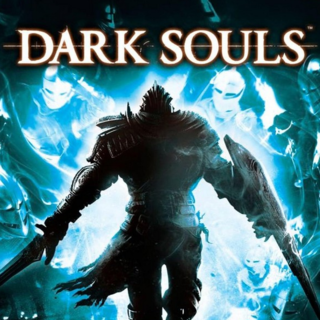a thoughtful and deliberate dungeon-crawler hampered by a few pervasive issues
This refusal to explain itself to the player is one of Dark Souls biggest failings, but in some other ways, it is the game's biggest strength. Moving into new areas with no idea of what the enemy or level design will be like is harrowing and tense, especially with the fact that if you die, you will be sent back to the last Bonfire which could be more than ten minutes of play-time away. Each new area has some facet in the form of new enemies or environmental hazards that must be figured out, making slowly, carefully treading into new areas Dark Souls' best moments. The methodical melee combat and intimidating environments and enemies make for some compelling moments with increasing risk-reward as you decide whether to venture further into a new area with dwindling supplies but increasing souls or turn back and rest/level up at the last bonfire. Sometimes pressing on will result in disaster, but other times, you will find a new bonfire or item.
Unfortunately, to get to these moments of tense, tentative exploration, you must come to terms with a large amount of baggage and tedium. While Dark Souls features a large, interconnected world, you are given almost no direction as to where you should go next. This means you might wander into a new area meant for much higher level players as some of these will be made open to you right from the get-go. Some indication or means of preventing players from wandering into these areas, or indicating where the players should go next, would be a very helpful mechanism that would do little to sacrifice how dangerous the world is. The levels the game wants you to complete at times may seem initially insurmountable, so it is easy to venture into an area, die a few times, and assume you aren't supposed to be there yet. The line between impossible and overcomeable is often a thin one that isn't initially obvious.
The difficulty in Dark Souls comes from a variety of places, and while some of the challenge is legitimate and fair, other times the game descends into cheapness. This is no more apparent than with a significant proportion of the game's many bosses. Often times you are forced to fight in small areas or against bosses that force you to fight primarily with the controls and mechanics rather than the bosses themselves. The Capra demon, for instance, is fought in a tiny area that causes the camera and lock-on system to jerk about crazily making the fight much more difficult than it should be. Priscilla the Crossbreed turns invisible and does not allow you to use the lock on system, meaning even if you know where she is, being able to aim at her and attack in the brief moments where she is exposed is made incredibly difficult. Many of the bosses suffer from such problems, making triumph a matter of tedious trial-and-error as you gradually learn how to exploit the environments and attack patterns. Other bosses are extremely well designed, such as Ornstein and Smough and the Gape-Dragon, but most of them fall within the middle-ground of mediocrity.
There are also a number of mini-bosses which are also generally well designed who when killed do not re-appear when you next rest at a bon-fire. If the game increased the number of these mini-bosses and reduced the number of major ones, the game would be better for it. Another aspect of Dark Souls that increases the difficulty in a low-brow way is the prevalence of high-narrow ledges in some levels and the clunkyness of the movement and lock-on system. Many levels such as Sens Fortress, Blight-Town, parts of Anor Londo and Tomb of the Giants force you to balance on narrow ledges while engaging in combat. The movement mechanics in Dark Souls are not conducive even to standing on these narrow ledges, as the movement controls are rather imprecise and you tend to lurch forward and be shoved backwards during combat. The lock-on system forces you to look towards enemies meaning that back-pedaling often results in falling off a cliff that you were not allowed to see. Even worse are those times when you are required to do some platforming, such as with the Bed of Chaos and route to return to the Northern Undead Asylum. All of these components lead to frustration due to deaths caused by unwieldy controls and the finnicky lock-on system.
Fortunately, for much of the game, you do not need to worry about fighting on narrow walk-ways or dealing with poorly designed bosses. Exploring many of the game's areas for the first time is an exciting and harrowing ordeal elevated by weighty and varied combat depending on what weapon you are using. The steep on-going learning curve is at times irritating but also allows for some epiphany-like moments of discovery that are deeply rewarding. If the sequel works on lessening some of the issues Dark Souls contains, it could take the better aspects of the game and create something truly great. For now, playing Dark Souls feels like looking through a very dirty window at something absolutely brilliant, you know there is greatness in there, but it only comes through in a few specific spots.

